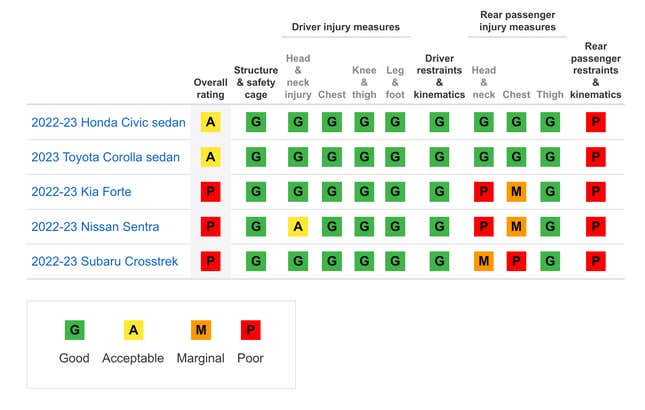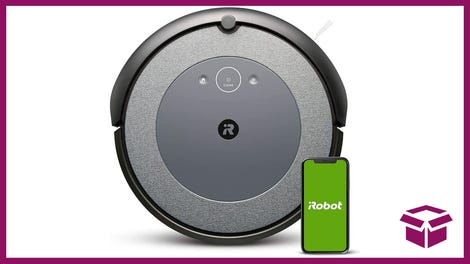We’d like to think that cars have become the safest they’ve ever been. Add in the advent of driver safety assistance tech for an added level of safety. But all that tech is for preventive measures. It’s up to automotive engineers to design a vehicle that performs well enough in a crash for its occupants to survive. For rear occupants in some popular small cars tested by IIHS, it might not have been enough.
In case you missed it:
- City Tests Traffic Light That Only Turns Green for Drivers Who Obey the Speed Limit
- 2024 Toyota Tacoma Leaks Show Off a Gnarly New ‘Taco
- The Cars That Went From Model Name to Separate Brands
The IIHS performed overlap front crash test — which sees a vehicle hit on the front driver side — on five small car models: Honda Civic, Toyota Corolla, Kia Forte, Nissan Sentra and Subaru Crosstrek. The results were not good.
While the Civic and Corolla barely edged by with overall “acceptable” ratings, the Forte, Sentra, and Crosstrek received overall “poor” ratings. Looking at the results you see where these cars came up short. Nearly all of them performed well in crash areas like head, neck, chest, knee, and thigh protection. But every single one had poor ratings for rear occupant crash protection. Essentially, if you find yourself having to get in the backseat of one of these cars, don’t.

For a vehicle to earn a good rating, there can’t be an excessive risk of injury to the head, neck, chest, abdomen or thigh, as recorded by the second-row dummy. The dummy should remain correctly positioned during the crash without sliding forward beneath the lap belt, and the head should remain a safe distance from the front seatback and the rest of the vehicle interior. A pressure sensor on the rear dummy’s torso is used to check whether the shoulder belt is too high, which can make the restraint system less effective.
In all five vehicles, the rear dummy submarined beneath the seat belt, causing the lap belt to slide from the hip bones onto the abdomen, where it can cause internal injuries.
In the three poor-rated vehicles, measurements taken from the rear dummy also showed a moderate or high risk of head, neck or chest injuries.
The potential of having head or neck injuries while being a backseat passenger is disturbing. With a few of these being their brand’s top sellers, engineers may want to get to work on improving rear occupant safety before things get worse.
